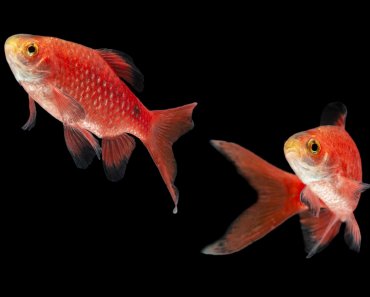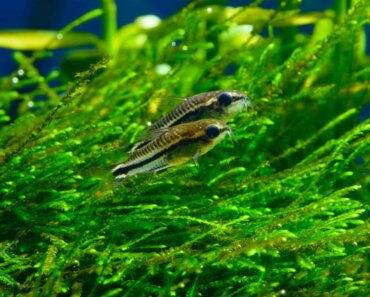
For original article click here

It’s an exciting time — your family is about to get bigger! Soon there will be somebody barking, meowing or even hopping around your house, keeping the kids company and making lots of memories.
But before you get sucked into a flurry of new pet selfies, we’re here to ask a very important question: Which animal is the best pet for you and your kids? There are a lot of things to consider when bringing a new pet home.
“First and foremost, the family should take a look at their schedule to ensure that the pet will be adequately cared for and they can meet the pet’s individual needs,” says Pia Silvani, director at the ASPCA Behavioral Rehabilitation Center in North Carolina. “For example, while cats may not require as much work as a dog, the litter box needs to be cleaned every day, brushing and nail clipping are required, as well as mental stimulation, which includes play. Dogs require training, exercise, socialization with animals and people, as well as mental and physical stimulation.”
All of these responsibilities suddenly become very real when a pet enters your Instagram story — and parents especially need to know that even if you’re getting an animal for a child, the day-to-day duties will fall in your lap.
“Children convince the parents that they will care for the pet,” Silvani says. “While their intentions are good, after a few months and a busy calendar, the child may lose interest in the ‘tasks’ that they promised and the responsibility is back on the parents.”
To help you on your quest to select the perfect family pet, we compiled this overview of nine pets parents usually get for kids and important considerations to make with each:
1. Dog
No two dogs are the same, so take your time and find a good match.
“Every dog is an individual with a unique personality,” Silvani says. “Whether a dog is well-mannered around children and babies has nothing to do with the dog’s breed type [it’s] more about whether the dog has been properly socialized with children early on.”
And if you think a small dog would totally suit a small child, think again.
“Small dogs are not necessarily the best choice for children,” Silvani says. “Young children tend to think small dogs enjoy being picked up, carried, hugged, dressed up, etc. Children need to learn that dogs should not be treated like a toy or stuffed animal.”
Considerations: Are you the traveling type? The family that wakes up on a Saturday morning with a game plan to spend the day driving across the state looking for landmarks? Think about how your dog will fit into this picture. Dogs need regular exercise, grooming and training, and they can’t be left alone for extended periods of time. As a result, a dog may not be the best pet for your family if no one is home during the day — unless you’re prepared to hire a dog walker or send your pup to doggy daycare.
2. Cat
As any cat lady will tell you, cats are independent creatures. While one kitty might be the biggest cuddle bug you’ve ever met, another may prefer a more solitary life (with regular servings of food, please!) Like dogs, cats do require responsibility — litter box duty will become some lucky person’s regular job — but the good thing about felines is that they may afford you a little more freedom. They need food, water, care and attention on a daily basis but leaving them overnight is definitely easier to do.
Considerations: Cats can bite or scratch when they’re not enjoying certain situations, so it’s a good idea to give your child a crash course in “Kitty Etiquette.” Teach them that not every cat likes to be held, or pet or snuggled, and that their quirks are what so many cat-lovers grow to love.
3. Rabbit
Rabbits are active and social, and they need plenty of stimulation or they can potentially get bored and destructive. If you plan to let your bunny explore your home you’ll need to do some serious bunny-proofing because they like to chew, according to the House Rabbit Society.
They require a rather large enclosure to dwell in, partly because they can grown in size as they age. The House Rabbit Society recommends an exercise pen, a large dog crate, a bunny-proofed room or a very large cage or condo (all of which require regular cleaning, so roll up your sleeves!)
Considerations: Like cats, rabbits can be quirky and some don’t like to be carried around, which may be difficult for children to understand.
“Animals need a break from children and they must be allowed quiet time so they are not overwhelmed with too much handling,” says Silvani.
4. Guinea pig
According to the Humane Society, snuggling and exploring are some of a guinea pig’s favorite pastimes, so they’ll need time out of their cage every day.
Regular responsibilities will include grooming, cage cleaning, and having supplies at the ready. Supplies for one guinea pig is a regular financial commitment, the Humane Society says, and that could potentially double should you get a second guinea pig, which is recommended for companionship reasons.
Considerations: They can be easily startled, so kids will need to learn how to behave around these adorable animals before they become a part of the family.
5. Turtle
Turtles are cute but quite complicated to keep. They need to live in a specific type of environment to really thrive. Everything from the temperature to the lighting must be just right, so you have to be ready and willing to set up those conditions.
Turtles have particularly long lifespans compared to most other pets, so you might have to care for them long after your kids are off to college.
Considerations: Not all states allow the sale or keeping of turtles or amphibians, according to the Centers for Disease Control and Prevention (CDC), and because of the risk for spreading germs like salmonella, you shouldn’t keep a turtle if you have children under the age of five or other people with weak immune systems living in your household.
6. Bird
Birds are intelligent and social pets. Though they spend most of their time in cages, it’s great if you can provide them with a safe place in your home to fly freely now and then.
Some birds, including parrots, can be loud or destructive and can live up to a whopping 25 years — which means they’ll stay in the nest a lot longer than your little humans.
Considerations: Petfinder.com says Chlamydiosis (psittacosis) and avian tuberculosis are two health issues to be informed about because they can make people with weakened immune systems, like children, sick.
7. Lizard
If your family has a particularly busy schedule and the desire for a relatively quiet pet, you might consider a lizard since they can be fairly low-maintenance.
While the habitat and feeding needs of lizards — which can have long lifespans — vary by type and can be pretty specific (insects, anyone?), most don’t require extensive grooming.
Considerations: Because some lizards are more delicate, an older child may be better at being gentle with them.
8. Hamster
Hamsters are nocturnal so only night owls will really get to see this critter in action. They have a relatively short lifespan — about two to three years — so keep in mind that your kids might get a lesson in dealing with the loss of a pet sooner rather than later.
Considerations: The Humane Society recommends adult supervision when a child younger than 8 handles a hamster because, like guinea pigs, they can be startled and even bite. Younger children may not be capable of making a hamster feel secure and could be at greater risk for diseases like salmonella, which hamsters can carry.
9. Fish
Often regarded as the perfect first pet for kids, fish are fascinating family members to watch, no matter your age.
Feeding them daily and cleaning out their tanks will be on a caregiver’s to-do list. The frequency of tank cleaning depends on a few factors, like the kind of fish you have, but generally it will need to be cleaned every two weeks. If your family life is too hectic for a dog or even a cat, these underwater friends can make great pets.
Considerations: The positives about fish are endless: their colors and swimming patterns can soothe, they’re quiet, they don’t require a lot of space, they don’t shed — but they still need care and attention, some more than others.


























